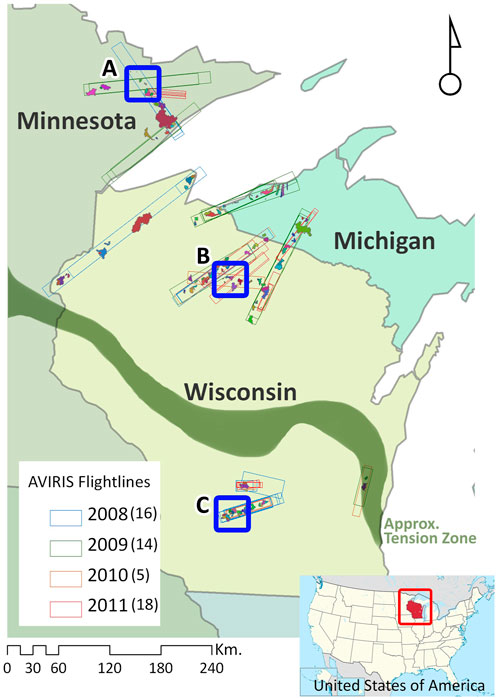The article investigates the interactions of biotic and abiotic factors influencing stream water quality in mixed-use watersheds, focusing on agricultural and forested land uses. Key components affecting water quality include nutrient cycling, nitrogen and phosphorus export, and the implications for eutrophication and ecological health. Agricultural practices, especially fertilization, emerge as significant nonpoint sources of nitrate-nitrogen and phosphorus, while forest disturbances can also impact nutrient retention and export.
The study employs structural equation modeling to analyze the roles of four latent variables: foliar biochemistry (nutrient retention), watershed physiography, human land use, and watershed leakiness. Higher foliar nitrogen content relates positively to nutrient retention, while urbanized landscapes are linked with increased nutrient export. Results indicate that foliar traits significantly affect nutrient cycling, supporting the hypothesis that vegetation characteristics can shape watershed responses to anthropogenic influences.
The research highlights that in predominantly forested watersheds, foliar recalcitrance is vital for minimizing nutrient leakage, while in agricultural watersheds, wetland retention plays a crucial role in mitigating runoff. The use of imaging spectrometry allows for advanced assessments of landscape traits, suggesting that effective management strategies could incorporate targeted interventions based on these findings to improve water quality across diverse regions.
In conclusion, the study emphasizes the importance of integrating ecological data and innovative remote sensing technologies in watershed management to enhance resilience and sustainability. This comprehensive approach could inform practices aimed at fostering healthier ecosystems while addressing nutrient pollution challenges.


